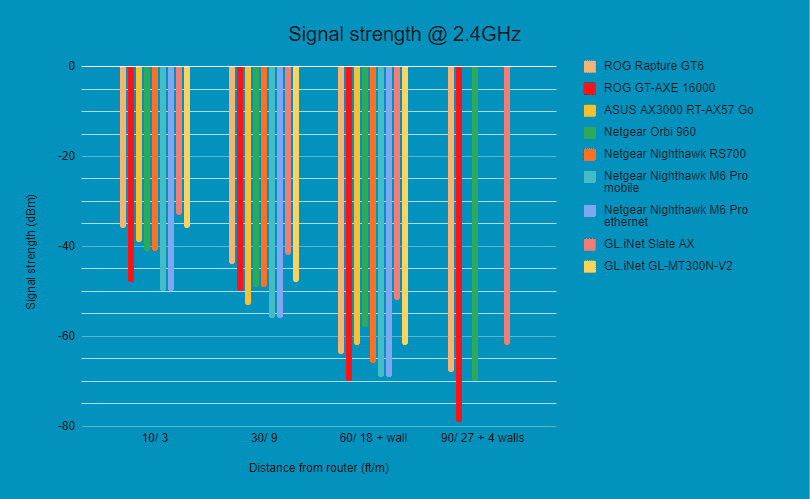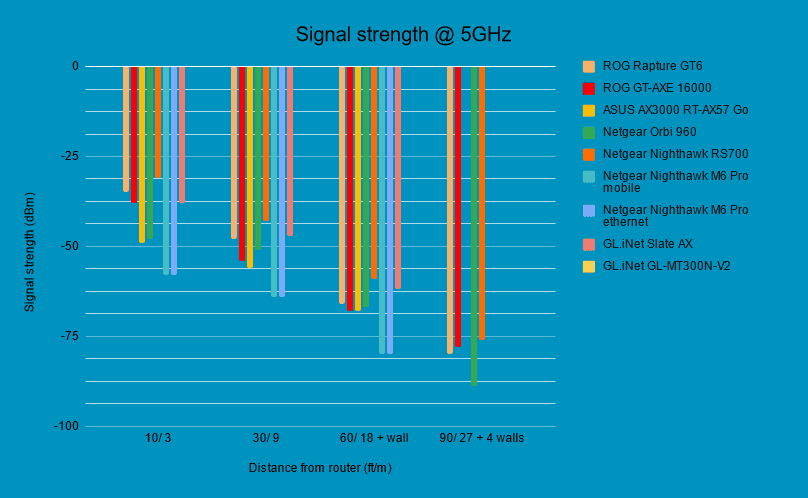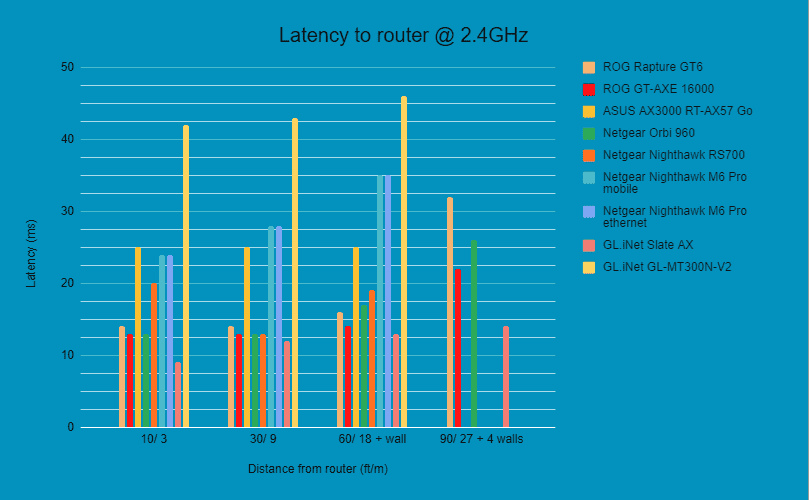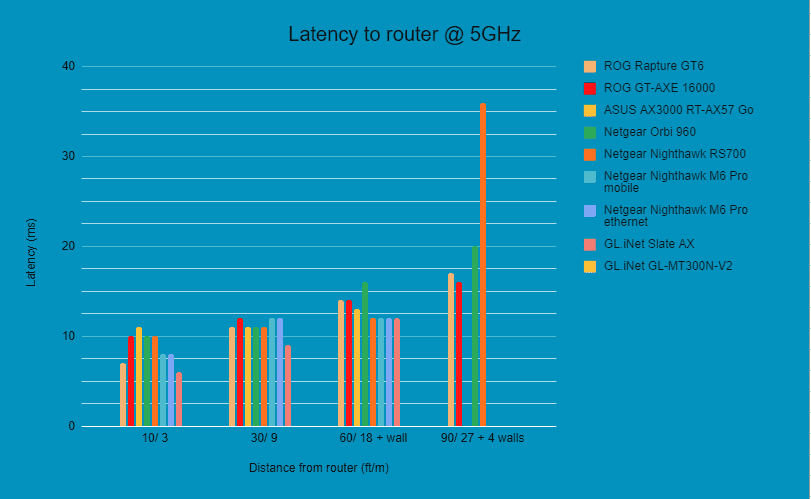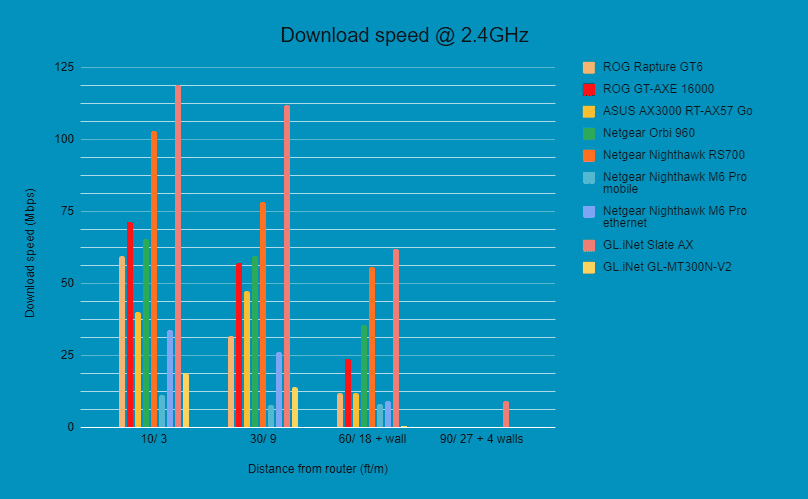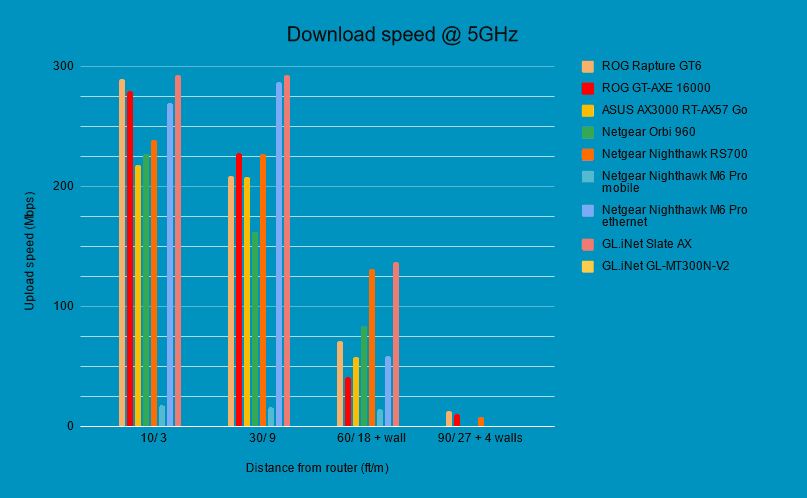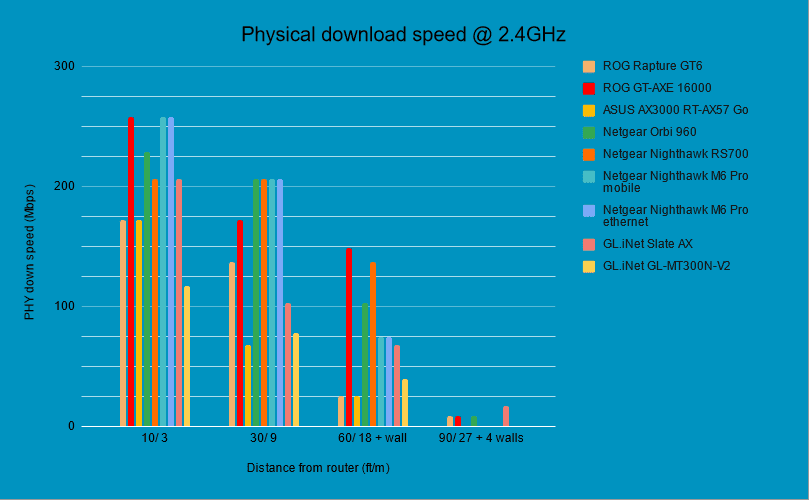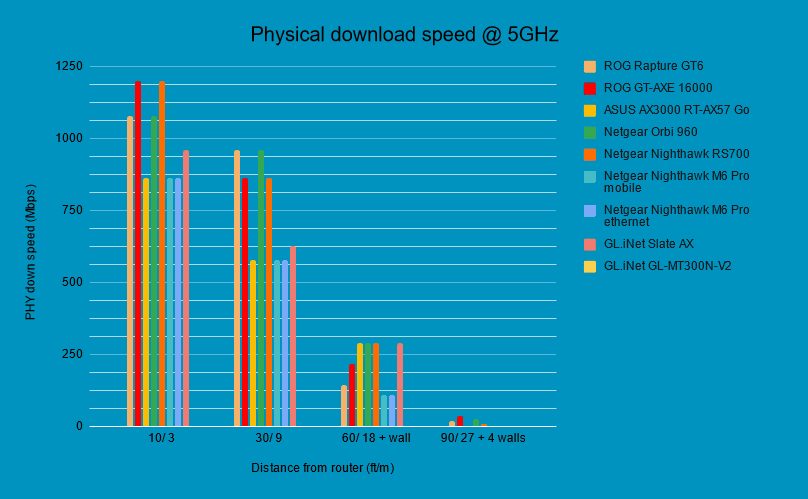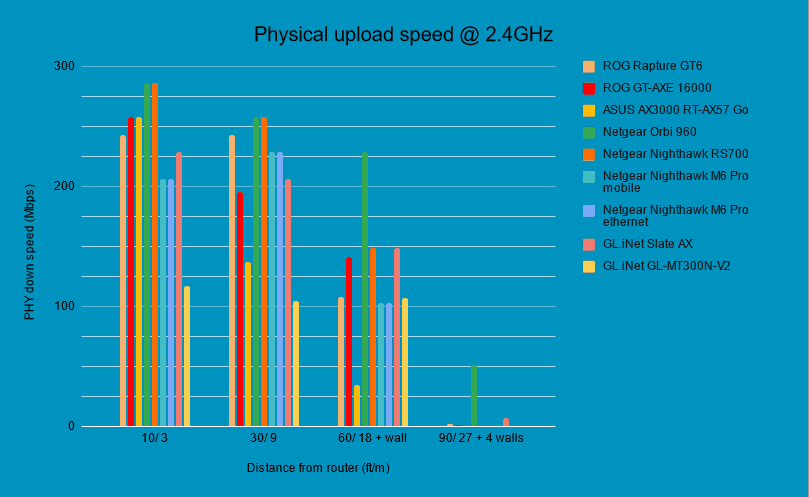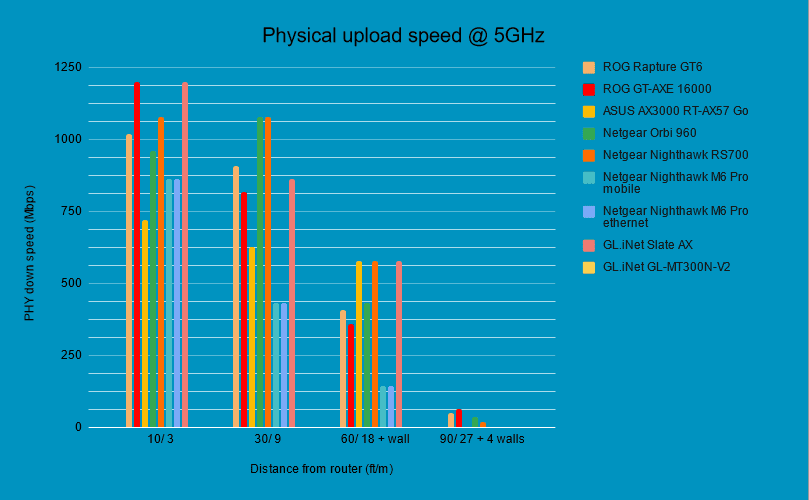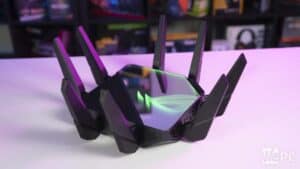Netgear Orbi RBKE963 review: a premium three-part mesh router setup
We tested and benchmarked the full Netgear Orbi RBKE963 setup, including RBRE960 host router and two RBSE960 satellites working in unison
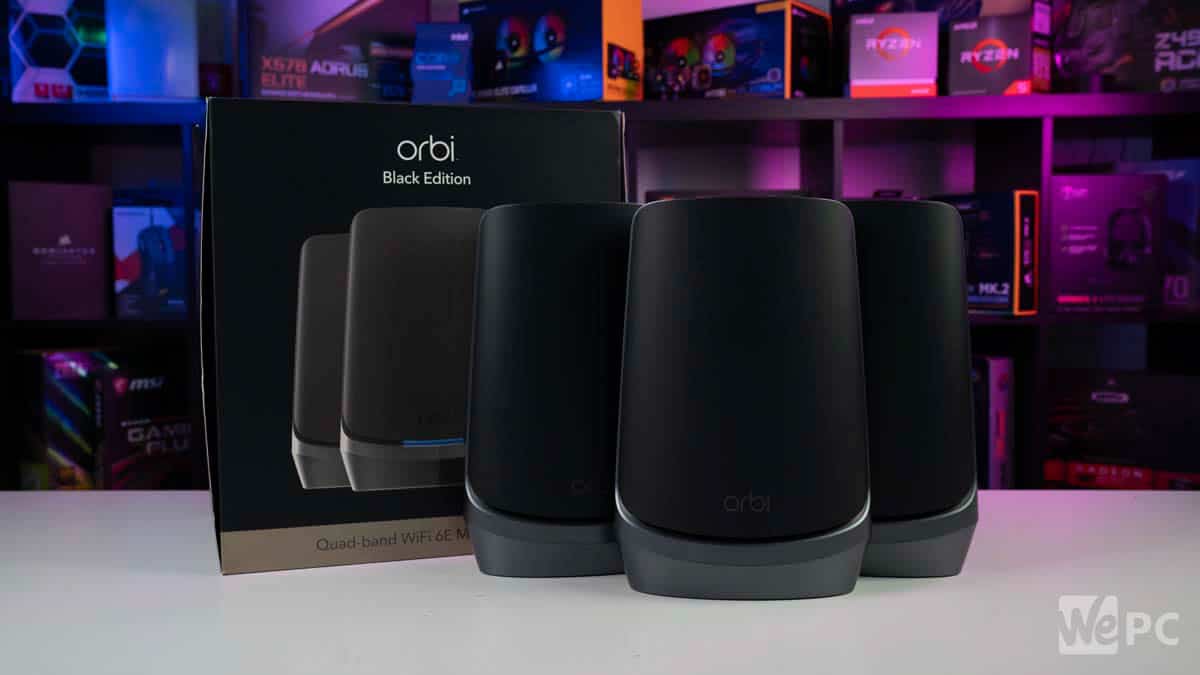
WePC is reader-supported. When you buy through links on our site, we may earn an affiliate commission. Prices subject to change. Learn more
The Netgear Orbi RBKE963 is a WiFi 6E, long-range, mesh router network setup, composed off three separate parts: the main RBRE960 host router, and two separate RBSE960 satellites (although a cheaper two-part RBKE962 kit is also available and you can buy the RBRE960 host router on its own should you wish).
Although not the latest WiFi standard (the more expensive NETGEAR Orbi 970 Series covers this), you’ll still be able to utilise 6GHz frequency bands, and the device promises excellent throughput. Let’s see how it measured up in our tests.

- Wireless standard: Wi-Fi 6E
- Band Frequencies: 2.4GHz, 2x 5GHz, 6GHz
- Max Speed: 10.8Gbps
- LAN Ports: 1x 2.5Gbps, 3x 1Gbps (Router & Satellites)
- WAN: 1x 10Gbps (Router)
- CPU: Quad-Core 2.2GHz (Router & Satellites)
- Memory: 512MB NAND Flash and 1GB RAM (Router & Satellites)
- USB: None
- Dimensions: 279.4 x 190.5 x 76.2mm (11 x 7.5 x 3in)
- Weight: 1.36kg (3.0lbs)
If you’re looking to cover a lot of area without dropping signal, then the Orbi RBKE963 mesh setup is a great choice. Although it doesn’t cover the latest WiFi 7 standard, this WiFi 6E router and satellite setup should still suffice for the vast majority of people looking for a premium setup.
It’s not a cheap product by any means, but for what you get in terms of features and quality of connection, it’s about the standard market price. The main downside as far as we’re concerned is the lack of USB ports, meaning you can’t add a conventional storage solution. The fact that some of the more advanced features like Netgear Armor require additional subscriptions is also a bit annoying, as is their prevalent advertising when using the app, but besides these quibbles, this is a great high-end setup.
- Incredible performance and range with multi-gig connectivity
- Lots of control and separation in the app and web including per-device child control
- Ability to set up separate guest and IoT networks to keep networks separated
- Smart security features with subscription trial and network VPN
- Lacks USB connection on any device
- Some features are subscription only and are overly advertised on the app
- Not the cheapest
Pricing
The full three-way Netgear Orbi RBKE963 setup is not cheap, coming with an MSRP of $1,500 at the time of writing, though we have seen it reduced by a hundred dollars or so in the occasional sale. As stated, you can pick up the 2-part set for cheaper, around the $1,100 mark, or buy the router itself or the satellites for $600 each.
Pricing can vary depending on retailer and also which color option you choose (black or white).
Cheaper WiFi 6E mesh options are available, but what you’re really paying for here is the performance and wide area coverage. More on this in Performance section below.
Overall Design
The host router and satellites both look identical to each other at first glance. All have a sort of angular oval shape with raised panels on the front and back, allowing for heat to be expelled through the gaps, with a groove underneath from which the status light emits. We had the black edition and these panels were colored black with the base section being grey.
The only visible difference between the two types is the backports: with the router having a 2.5G WAN connection.
These reasonably sized devices don’t take up much space, and are pretty unobtrusive in their design: ideal for home or office use. Separate mounting kits are available if you wish to month them, which attach to the two screw ports on the bottom.
Each device comes with 12 internal antenna in total and are rated for a WiFi range of 3,000 sq. ft. per device.
The available WiFi channels stretch across four frequency bands: one 2.4GHz, two 5GHz channels, and one 6GHz; as standard though, the 2.4GHz and both 5Ghz bands are merged into one larger band using smart connect, with only the 6GHz allowing you to connect to it separately. You also get a dedicated Internet of Things (IoT) channel, which keeps your smart home devices etc. separate from the rest of your network traffic, helping to keep it clearer.
In terms of the wired connections, as mentioned the host router has a WAN port rated for 10Gbps through which you get your ISP broadband input. Both the main router and the satellites then also have a single 2.5Gbps ethernet port and three 1Gbps ports.
Unfortunately, no USB sockets are present at all, meaning a NAS setup via ethernet is your only real option.
For processing, both satellites and the router get a Quad-core 2.2GHz CPU, which is remarkably powerful. They also feature 512MB NAND Flash memory and 1GB of RAM to help manage all those potential connections.
Other features
The included application allows you to setup a guest network with levels of access you can control for greater security.
In terms of encryption you get 802.11i, 128-bit AES encryption with PSK, plus a 30-day trial of Netgear Armor if you want an extra layer of protection. Netgear armour also comes with parental controls features that enable you to setup restricted profiles for different devices connected to the network, though once again this does not come for free after the 30 days.
The application itself is a bit of a pain to setup, involving a sign-up process that demands a lot of information, but once you get going it’s quite easy to use with a good amount of features.
Performance
In our performance testing, we subjected the Orbi 960 host router to a variety of scenarios to evaluate its effectiveness. It should be noted that our testing environment was a bit more limited than is ideal: we only had WiFi 6 devices to test with (we opted for the Samsung S21 FE smartphone specifically), so our WiFi testing was limited to the 2.4 and 5GHz frequency bands. Additionally, the network was limited and throttled to around 300Mbps.
The wireless connection (between the router and the testing device i.e. the phone) was tested at the standard distances we always use: 10ft/3m (uninterrupted), 30ft/9m (uninterrupted), 60ft/18m (with a wall between the two devices), and finally 90ft/27m (with two walls between the devices).
Given there was no USB port on the router, we could not perform our standard file transfer speed test.
Signal strength and latency
Signal strength is measured in decibel milliwatts (dBm) and essentially measures the reliability of the connection. In this measuring system, -30 dBm is the perfect result for a signal at one end of the scale, with around the -90 dBm mark typically signifying disconnection at the bottom end: the better results are those closer to -30 dBm, though anything around the -50 dBm to -67 dBm range is considered good. Signal strength typically depends on the quality of the antennae on the router and the level of interference between the devices. Our results were recorded using the WiFiman app.
On the 2.4GHz frequency band the Orbi 960 displayed good signal strength at every distance measured, coming in about the middle of the pack compared to other routers we’ve tested (with a range between -41dBM and -70dBm). Overall the 5GHz band was slightly weaker than average, though this was only really noticeable at the longest distance measured (across all distances, ranging between -48 and -89dBm).
Latency is measured in milliseconds (ms), and is basically how long it takes for data to travel between the router and the device, with the lower numbers representing faster speeds. At the 2.4GHz band the Orbi 960 performed well on the lower distances, though latency suffered at the highest distance, performing worse than others at the 27 metre mark. Overall, results ranged between 13ms and 26ms at this frequency. The 5GHz band showed superior performance in this area, with a range of results between 10ms to 20ms, so possibly the preferred frequency if you’re doing some fast-paced gaming.
Network download speed was measured by the Oopla speed test app in units of Megabits per second (Mbps). Performance on this may be affected considerably by any network throttling (which we do experience in our testing environment) so take these specific results with a pinch of salt. Results on the 2.4GHz band saw a 65.3-35.5Mbps download rate as it failed to work at the full range, with a 67.9-6.2Mbps upload rate. The 5GHz band saw 197-57Mbps download rates, with 227-83.9Mbps upload (so considerably stronger). LAN speed was measured at 254.8Mps download and 275.5Mbps upload.
Physical download/upload speed is measured via the WiFiman app. 2.4GHz saw a 229-8Mbps download range, with the 8Mbps low point (being very low) taking place at the longer ranges with the most obstacles; upload ranged between 286-51MMbps. The 5GHz band saw much stronger results: ranging between 1080-25Mbps but still was high in between; upload was between 1080-34Mbps.

Netgear Orbi RBKE963 mesh router setup













